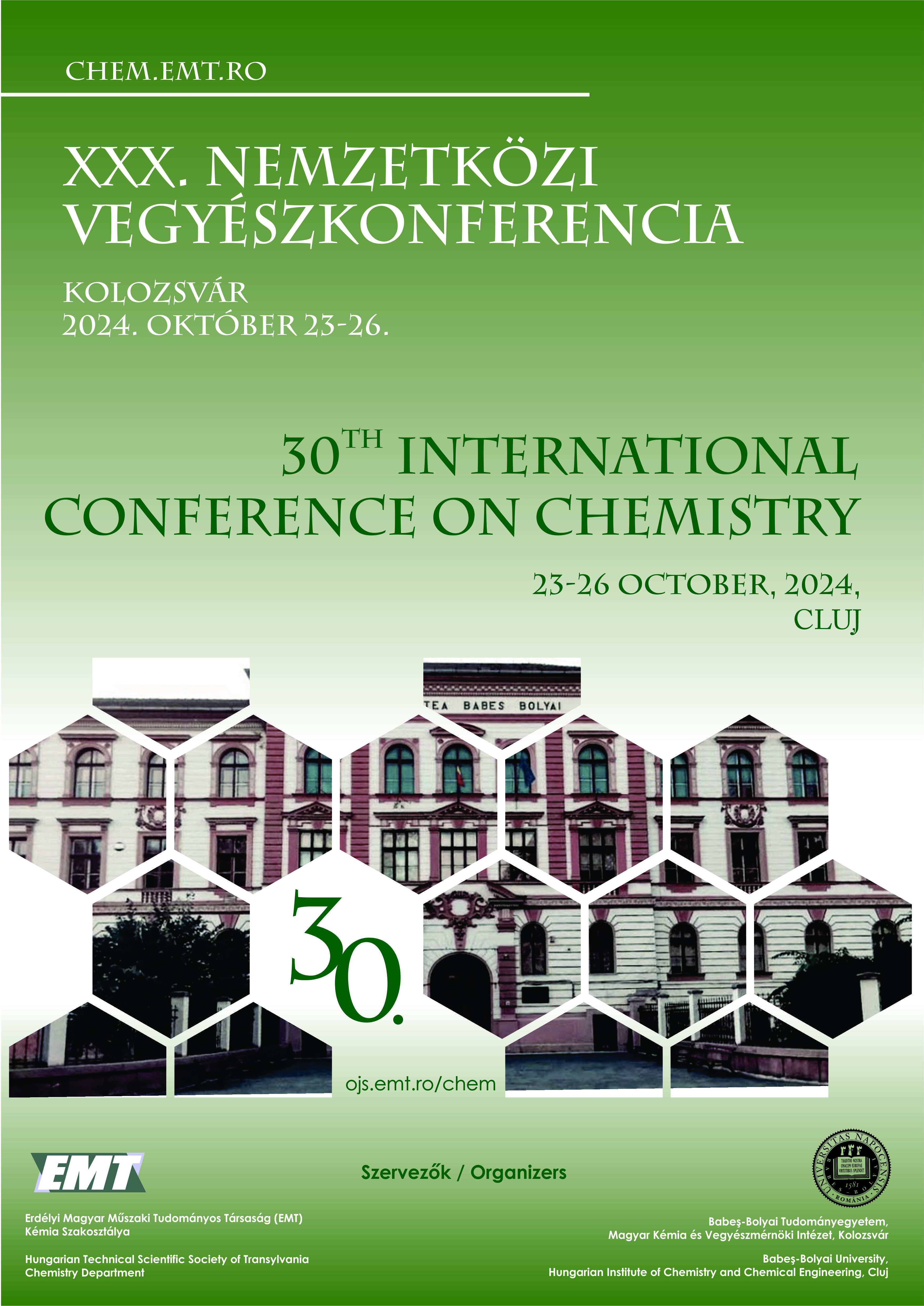NIR fluoreszcens szerves festékek szintézise és fotofizikai vizsgálata
The synthesis and photophysical investigation of NIR-flurescent organic Dyes
Keywords:
diketopyrrolo[3,4-c]pyrrol, direct arilation, fluorescence, solvatochromism, /, diketo-pirrolo[3,4-c]pirrol, direkt arilezés, fluoreszcencia, szolvatokróm KönyvészetAbstract
Since their discovery in the late 1970’s, derivatives of diketopyrrolo[3,4-c]pyrroles (DPPs) have attracted increasing research interest. Due to the combined effect of the two amide groups in the condensed lactam core, DPPs are excellent electron-acceptor ligands1. In the first step of my work, I selected an N-alkylated DPP derivative that contains thiophene rings at the 3,6-positions and subjected it to various cross-coupling reactions. The reagents used in the coupling reactions, along with the DPP, were halogenated aromatic compounds with good electron-donating properties. According to the literature, the direct arylation can occur on both thiophene rings of the base molecule2, however, the results show that the product mixture contains the bis-substituted form of the starting compound in very low amounts or almost not at all. The structures of the isolated products were confirmed using NMR (1D and 2D) and HRMS measurements, and their solvatochromic properties were investigated. The samples exhibited moderate Stokes shifts.
ÖSSZEFOGLALÓ
A diketo-pirrolo[3,4-c]pirrolok (DPP-k) származékai az 1970-es évek végén történt felfedezésük óta egyre nagyobb kutatási érdeklődést mutattak. A kondenzált laktám vázban levő két amid csoport együttes hatása miatt a DPP-k jó elektron-akceptor ligandumok1. A munkám során első lépésben kiválasztottam egy N-alkilezett DPP származékot, amely 3,6-pozícióban tiofén gyűrűket tartalmaz, majd különböző keresztkapcsolási reakcióknak vetettem alá. A kapcsolási reakciókban a DPP mellett alkalmazott reagensek minden esetben halogénezett, jó elektronküldő tulajdonságokkal rendelkező aromás vegyületek voltak. A szakirodalom szerint az alapmolekula mindkét tiofén gyűrűjén végbe mehet a fentebb említett direkt arilezés2, viszont az eredmények azt mutatják, hogy a termékelegy nagyon kis mértékben vagy szinte egyáltalán nem tartalmazza a kiindulási vegyület bi-szubsztituált formáját. Az izolált termékek szerkezetét NMR (1D és 2D) és HRMS mérésekkel igazoltam, majd szolvatokróm tulajdonságaikat vizsgáltam. A minták közepes Stokes eltolódást mutattak.


